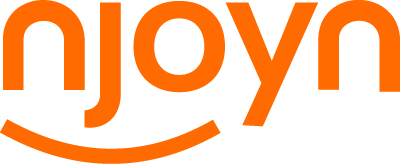
Unconscious bias during recruiting
“When American orchestras started using a physical screen during auditions, so that the hiring committee could not see the musicians, the percentage of female musicians in the country’s top orchestras quickly climbed.”
Elizabeth Merritt mentioned this story in a 2017 American Alliance of Museums article. It outlines both a common recruiting problem and the hiring solution.
The problem
Unconscious bias can prevent organizations from hiring the best people.
The solution
Design your recruiting system to prevent the effects of unconscious bias. After all, when your organization gets the best players, it will make better music.
“I don’t have any biases!”
We all like to think we don’t hold biases. Here’s the uncomfortable truth: as human beings, we’re all susceptible to unconscious bias. That means we all harbor thoughts and feelings “outside” of our conscious awareness and control.
Right now, you might be indignantly thinking: “I’m too logical/ present/ responsible/ mature/ fill-in-your-own-adjective to be biased!” You might pride yourself on being unbiased in some ways. That doesn’t mean you’re unbiased in every way. Consider this partial list of sources of bias:
- skin-tone preference
- age preference
- positive and negative stereotypes
- weight preference
- likeness to oneself
Did you recognize any biases of yours? If not, try this implicit association test.
The costs of biased recruiting
Many organizations fight bias every day. Consider Facebook’s initiative: they’re sharing their internal work and materials freely. More commonly, people organize themselves into hiring committees to reduce bias. But internal politics and biases within committees can cause problems like:
- infighting
- long, drawn-out debates and discussions
- behind-the-scenes deal-making
What are the consequences?
- hiring delays
- missing out on great candidates
- picking candidates for the wrong reasons
- bad blood between colleagues and/or against the successful candidate
How does recruiting bias happen?
Elizabeth Merritt identifies six stages where bias can creep into the recruiting process in her above-mentioned 2017 article: Taking the Bias out of Hiring: Identifying and eliminating unconscious bias in recruitment processes. She also offers different perspectives on each stage.
Defining the qualifications for the position
What attributes does the candidate really need? Does the applicant have to be like the person doing the hiring?
Writing the position description and the job posting
The words chosen may unthinkingly come from boilerplate that subtly keeps good candidates away. Recruiters have long known about poor wording in postings. Indeed, services like Textio exist to take bias out of job postings.
Disseminating the job posting
Recruiters can find qualified candidates in places outside the usual channels. The wider a net they cast, the more likely they are to build a diverse workforce.
Structuring the application process
Organizations of all stripes increasingly ask candidates to show what they can do. This “challenge-based hiring” method can give hiring managers a better sense of what it would be like to work with each applicant.
Evaluating applications
Any scoring system must closely reflect the qualifications demanded and goals to be achieved.
Conducting interviews
The interview process must be consistent from candidate to candidate. The same goes for the debrief process.
If you’re hiring for an orchestra, use the “blind screen” method mentioned at the beginning of this post. If not, devise your own “blind screen.”
Nudging people to better hiring decisions
It’s difficult to hire the best available people. It’s difficult to attain diversity objectives. Even reading all the research may not be enough.
Advanced organizations strive to embed bias-prone tasks in easy-to-learn systems that also make everybody’s job easier. The design of Njoyn, a leading cloud-based recruitment management system, was driven by concerns like these. Njoyn helps human resources professionals facilitate, track, and report on an organization’s recruitment activities.
In fact, Njoyn helps organizations handle a variety of hiring issues, like:
- manual processes that allow for errors
- paper-based processes that cause delays
- outdated application processes that prevent an organization from appearing to be an employer of choice
- an inability to report on candidate diversity and hiring metrics
In our next post, we’ll discuss how Njoyn nudges recruiters past their unconscious biases towards better hiring decisions.
Search
Most Popular Posts
150 Commerce Valley Drive West. Markham, ON. L3T 7Z3. Tel: +1 905 695 6560
